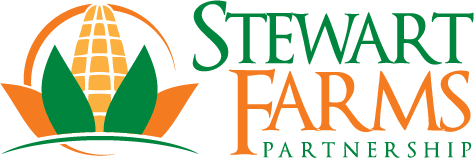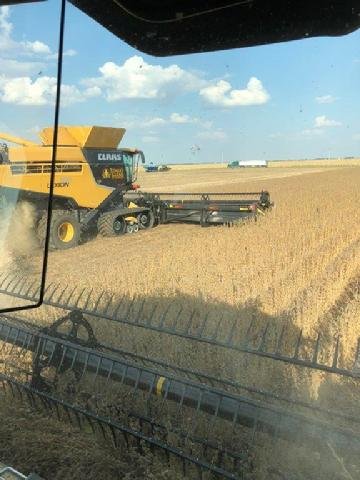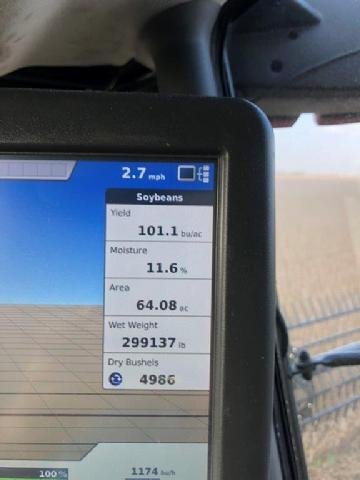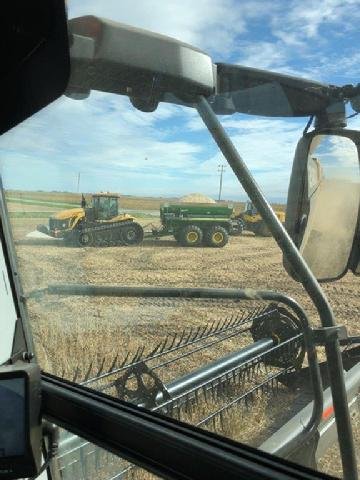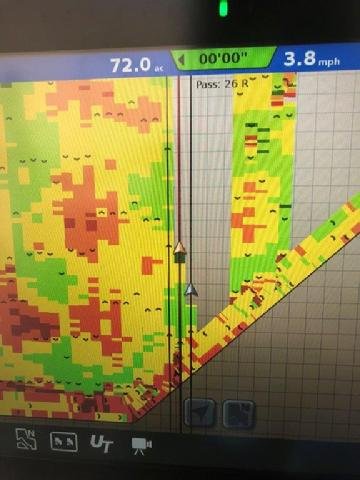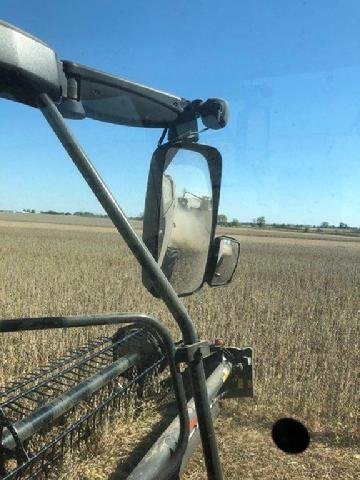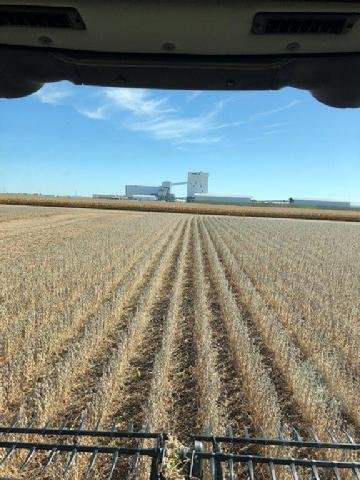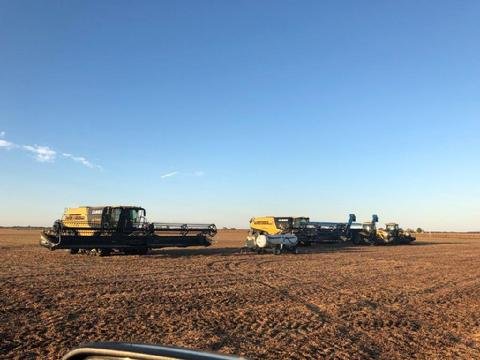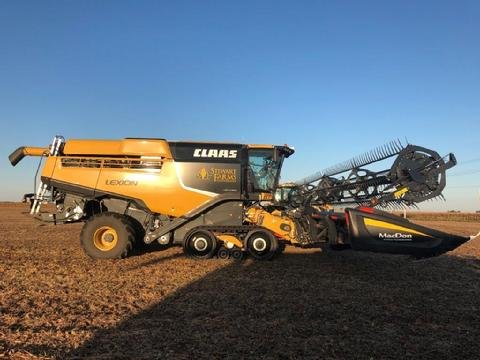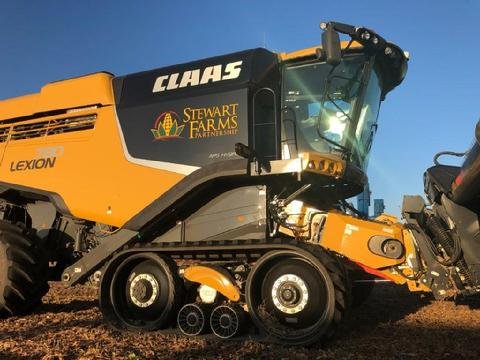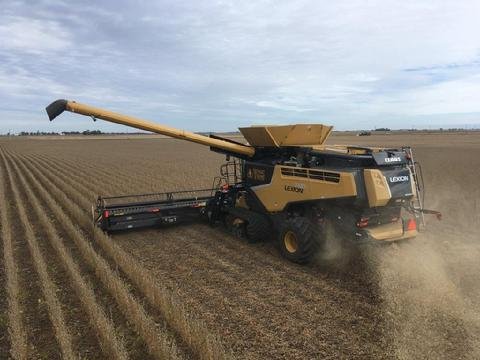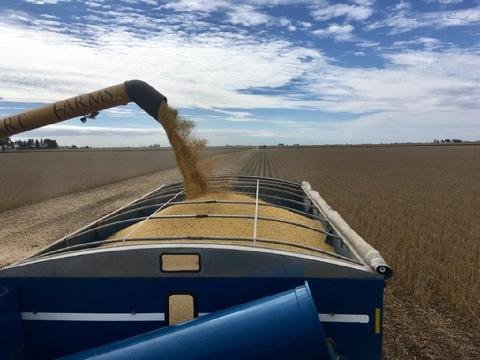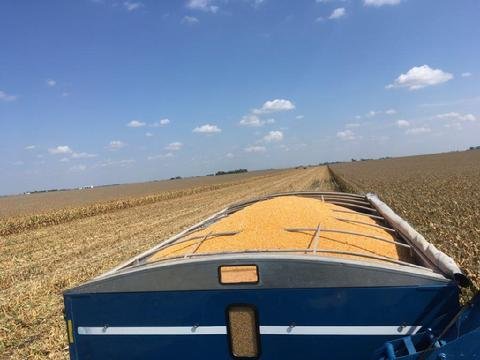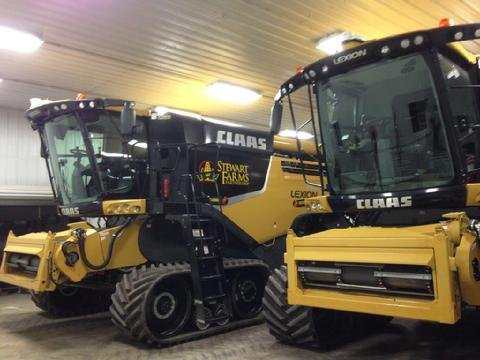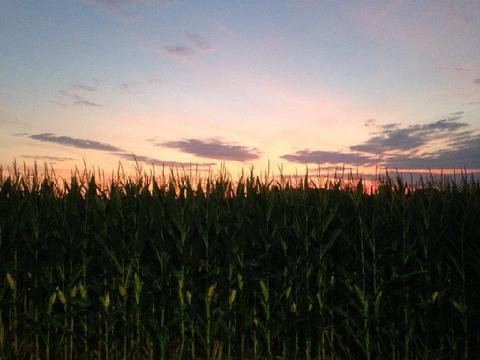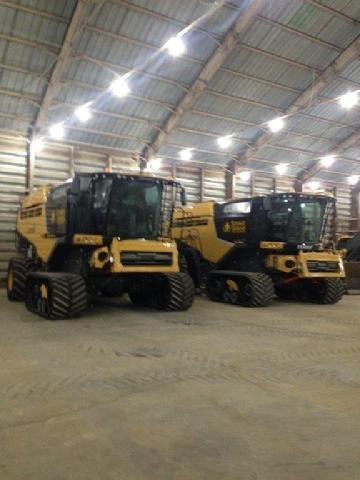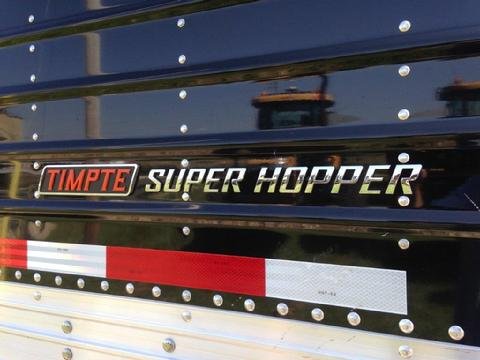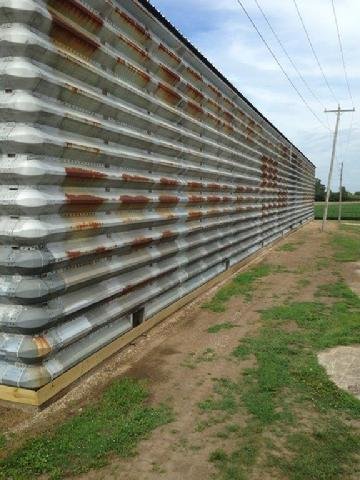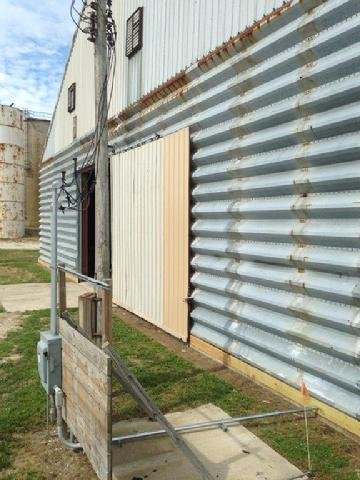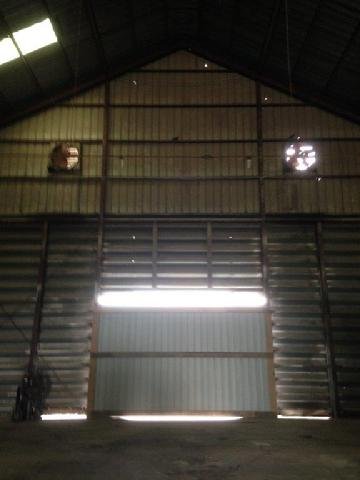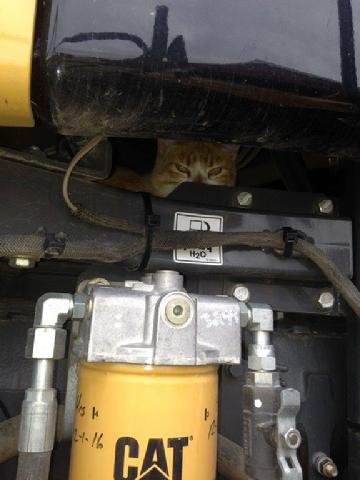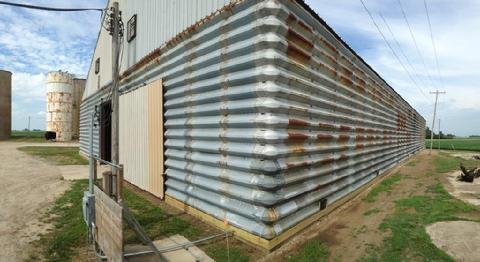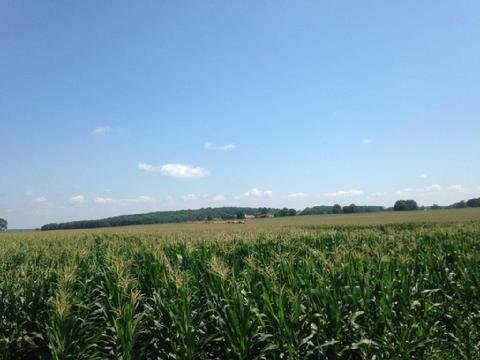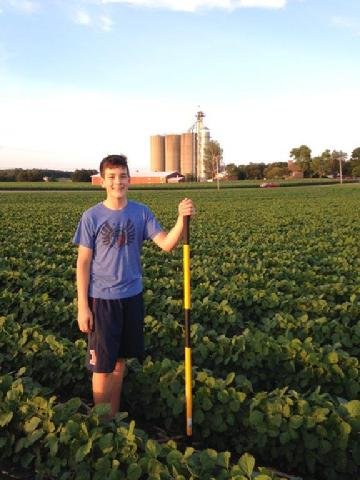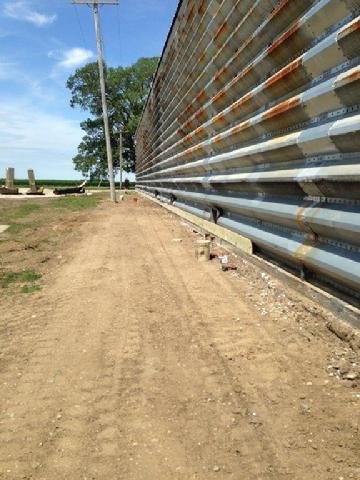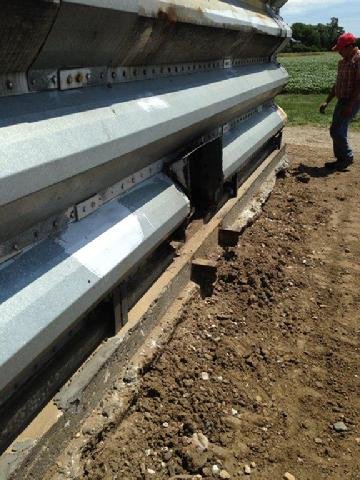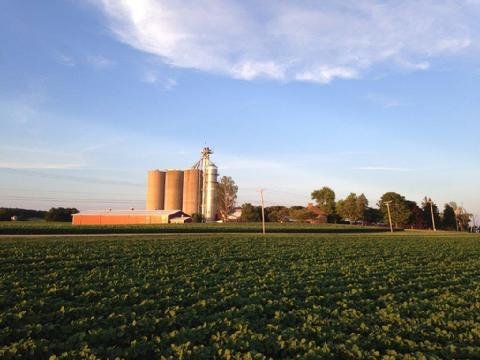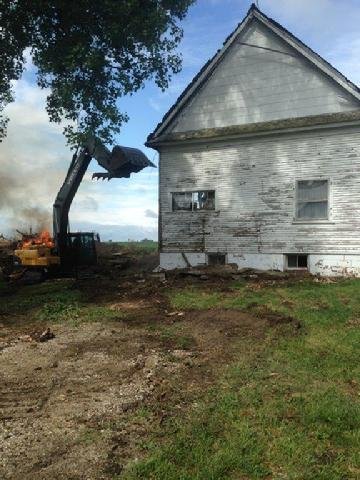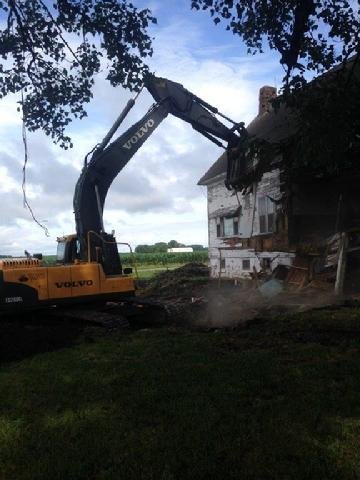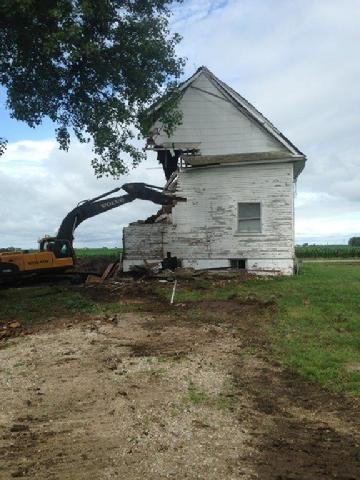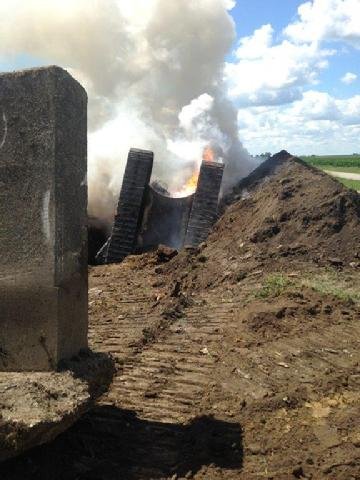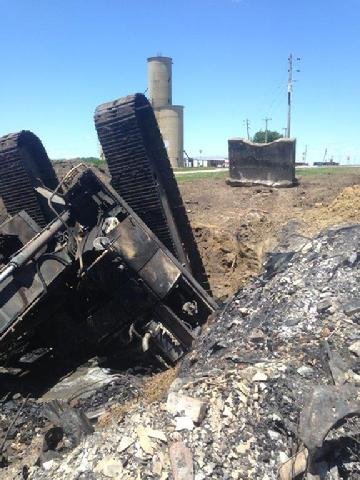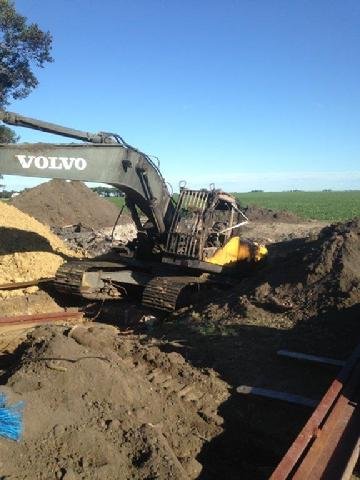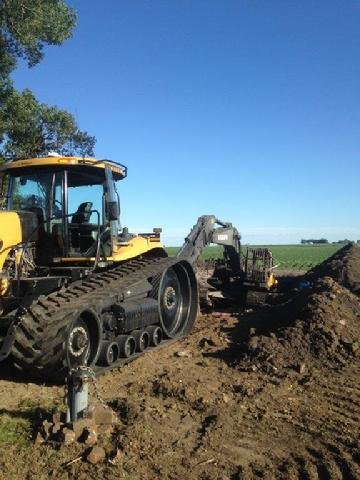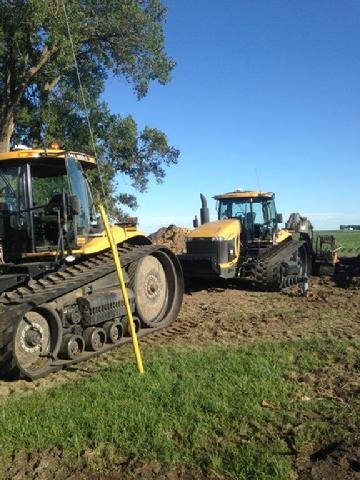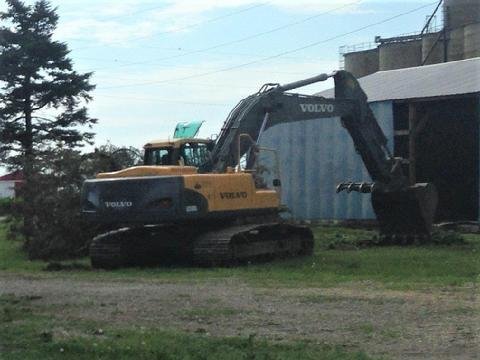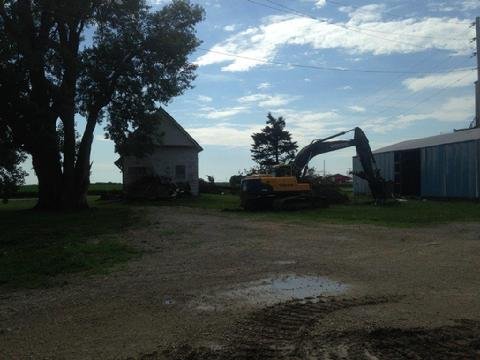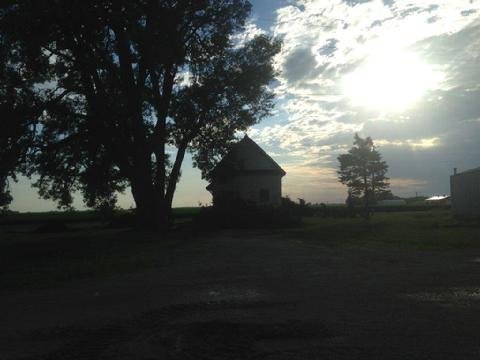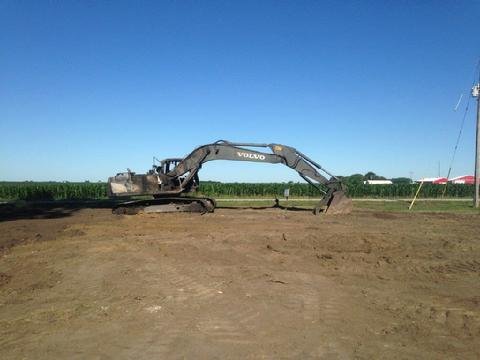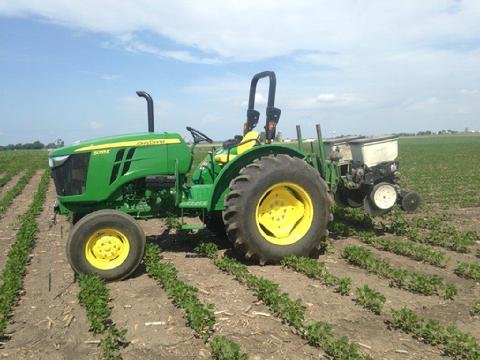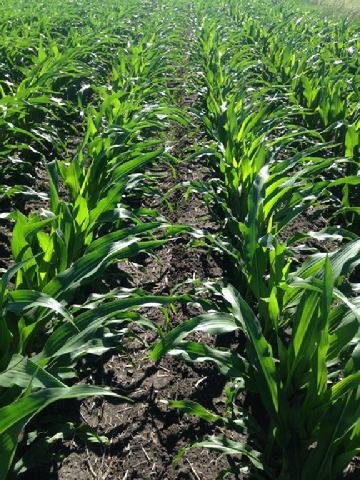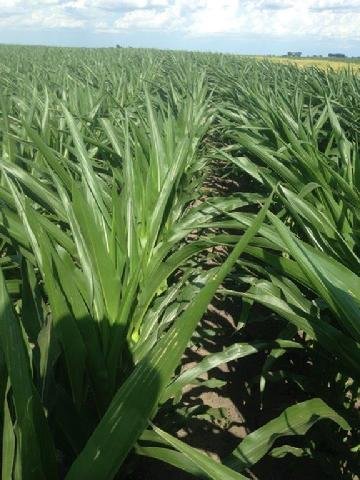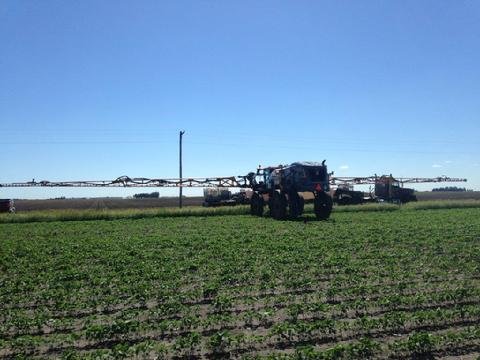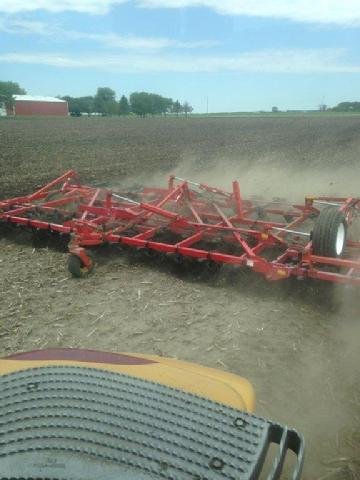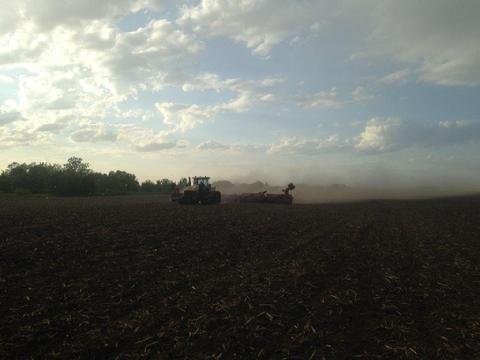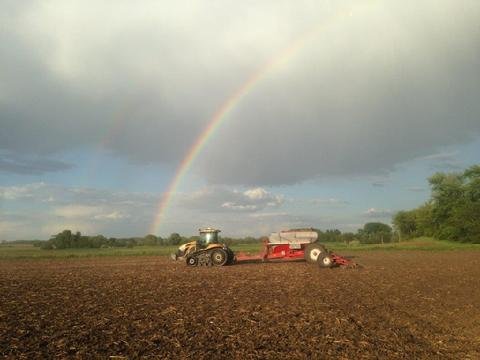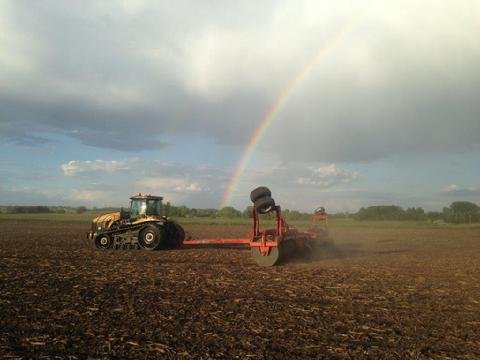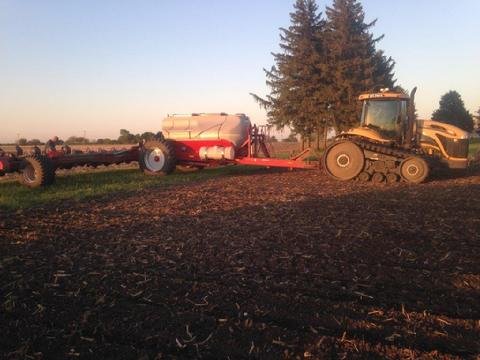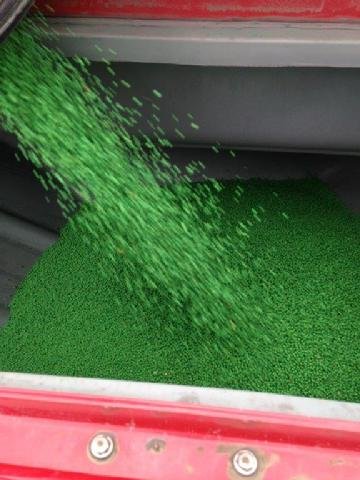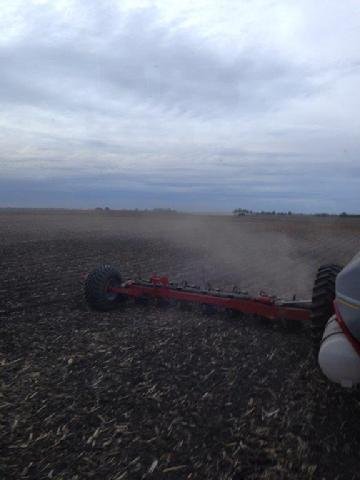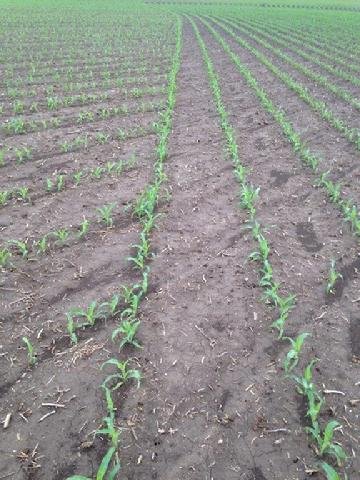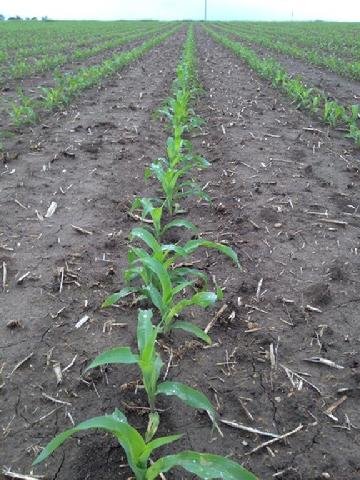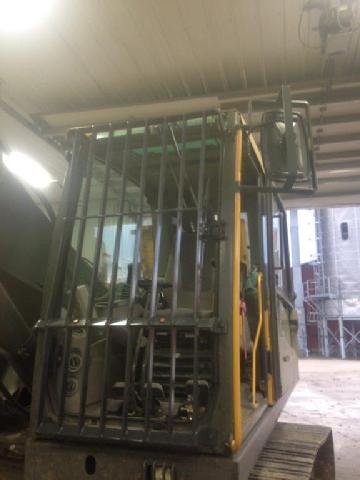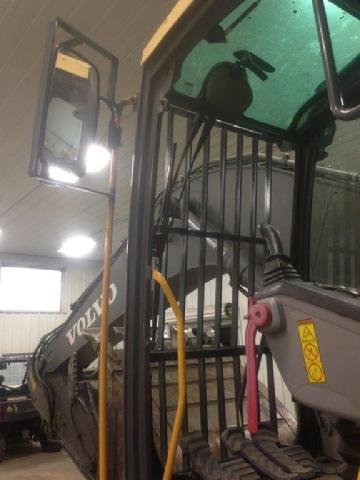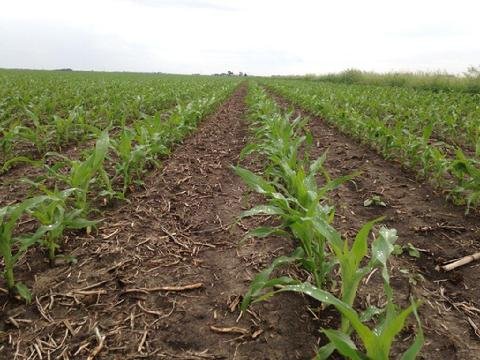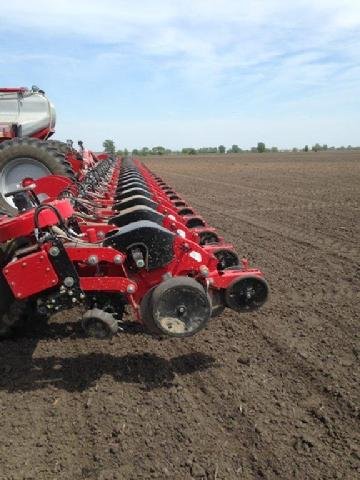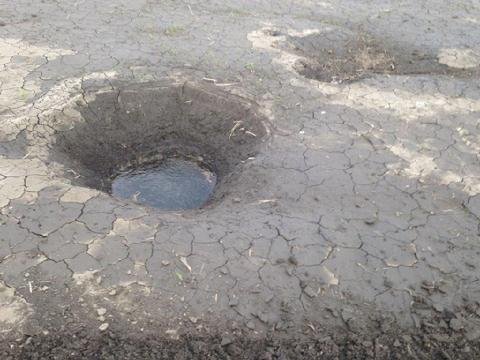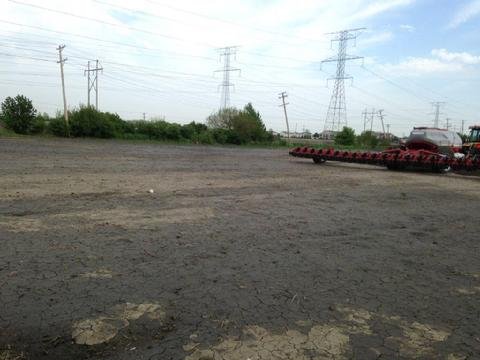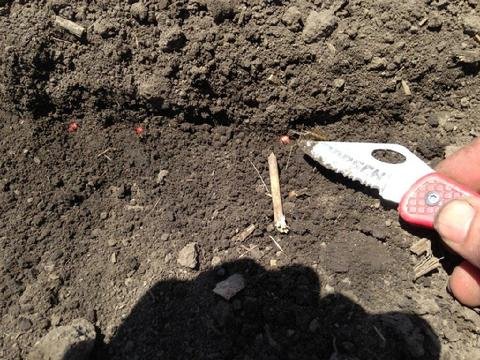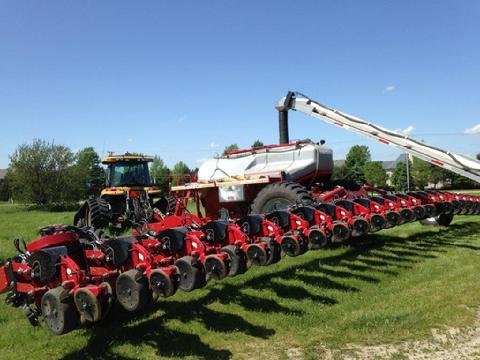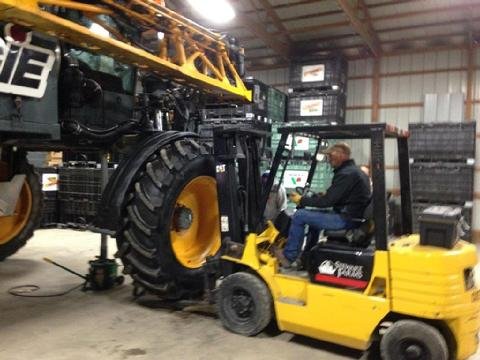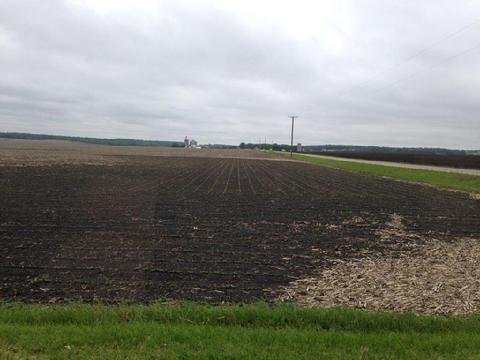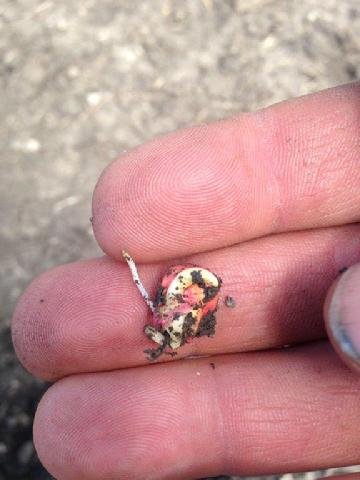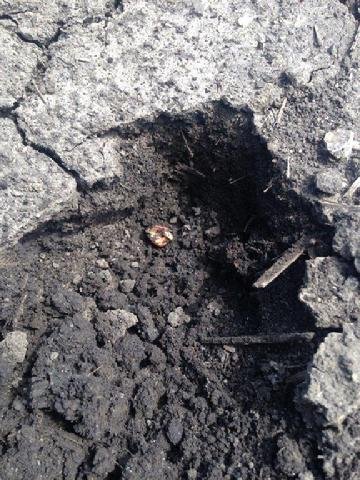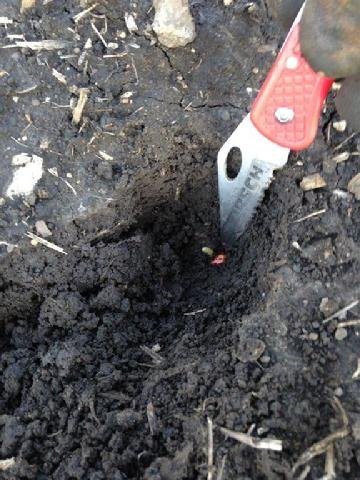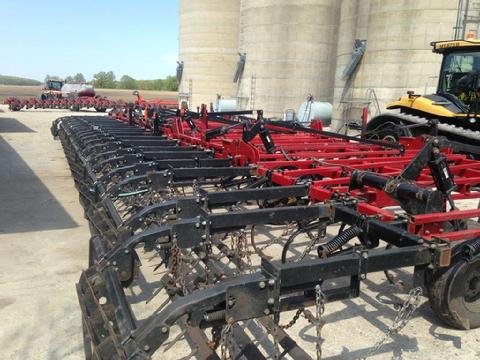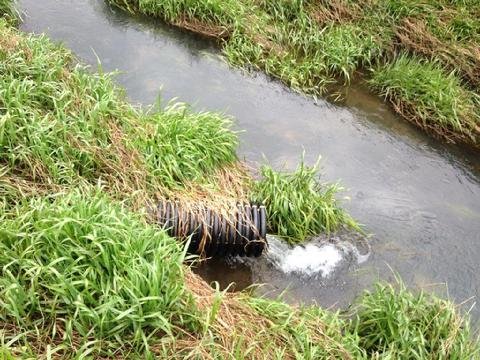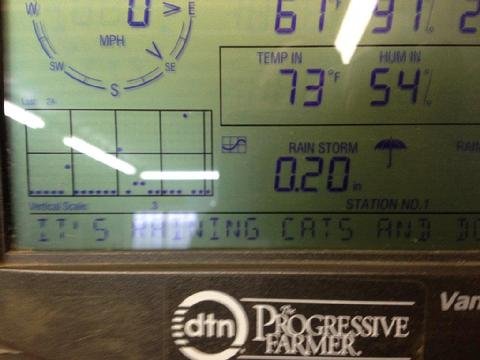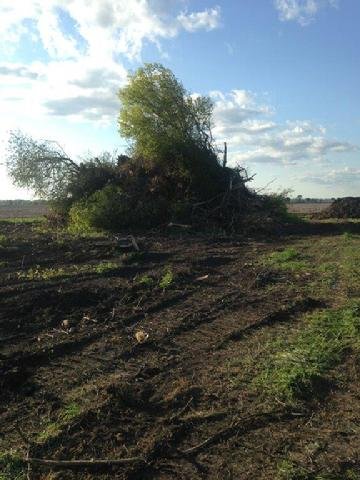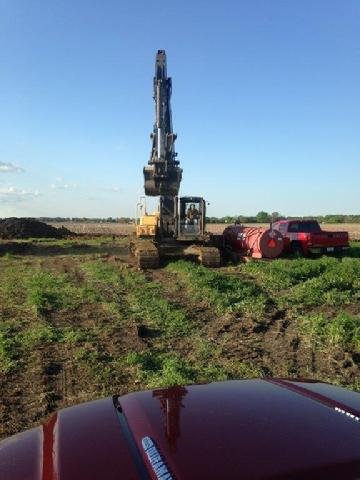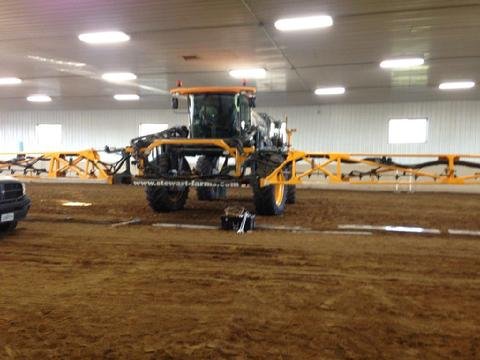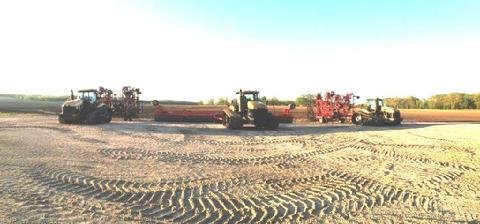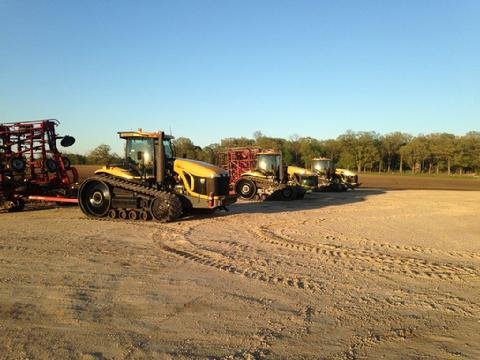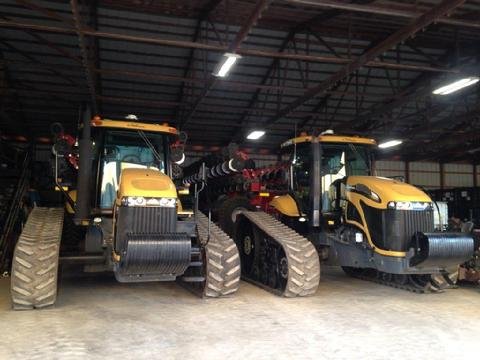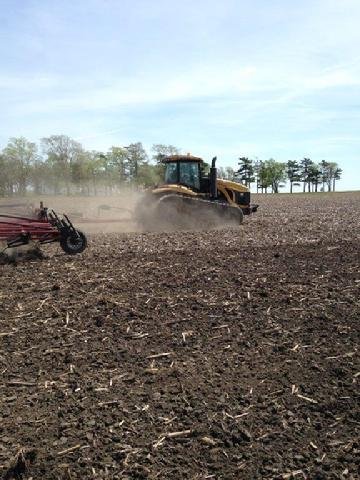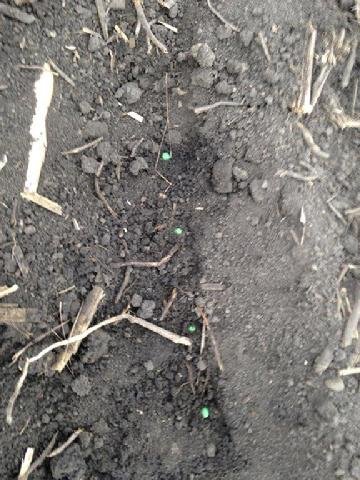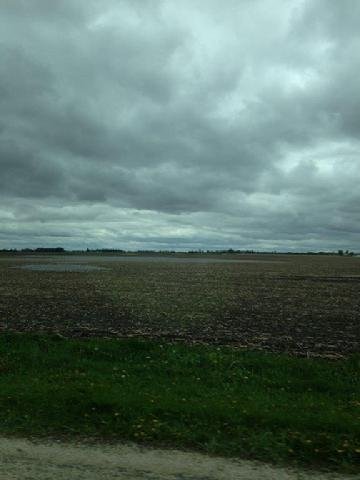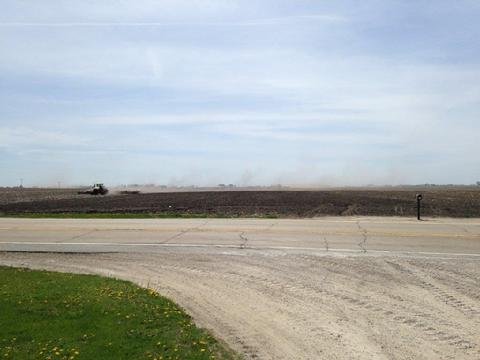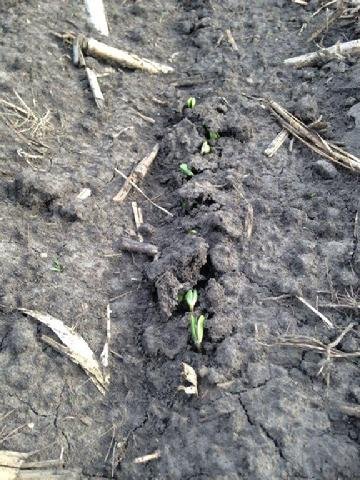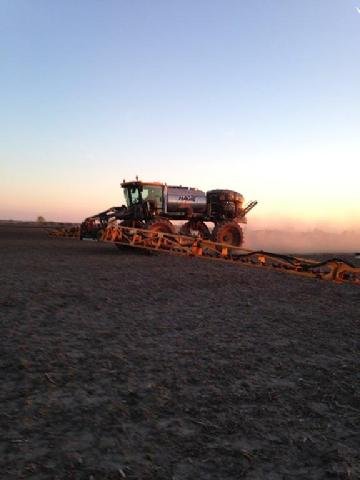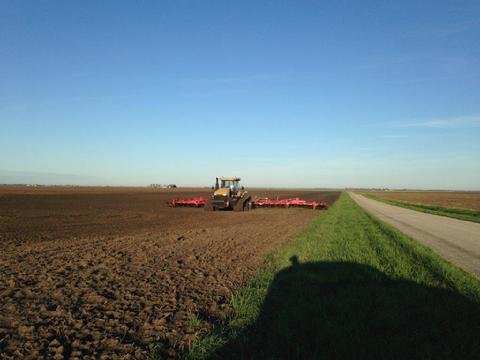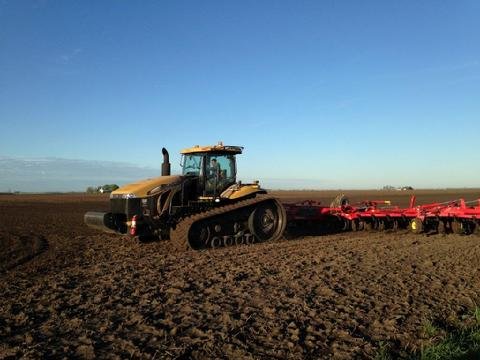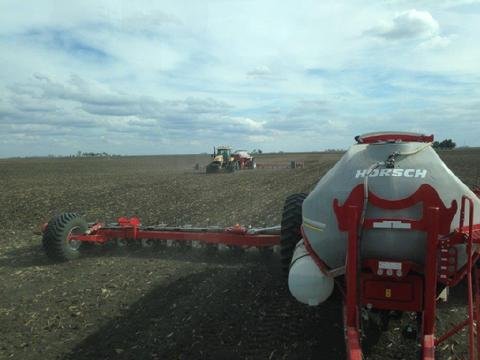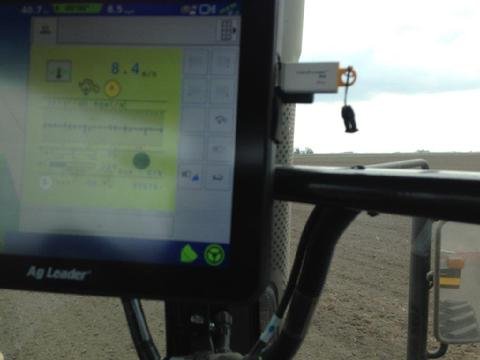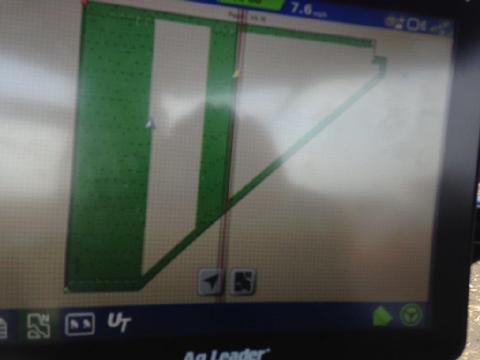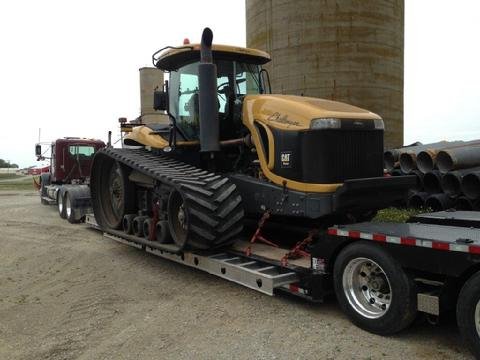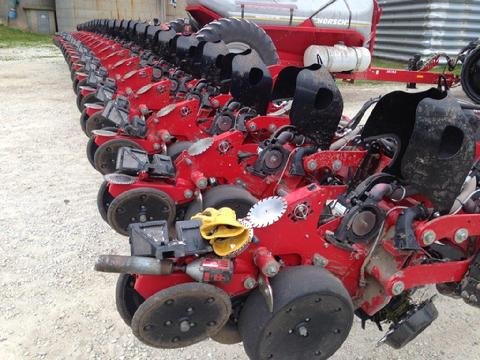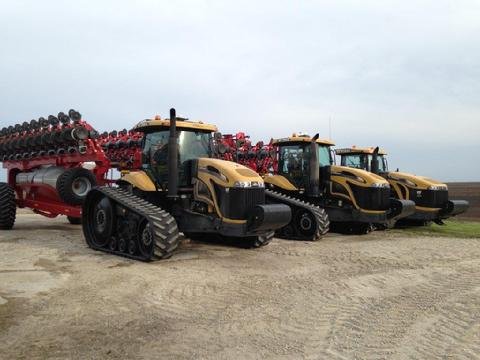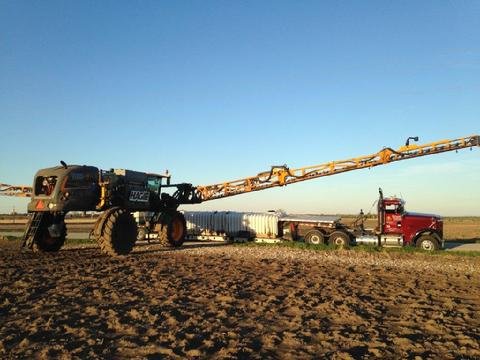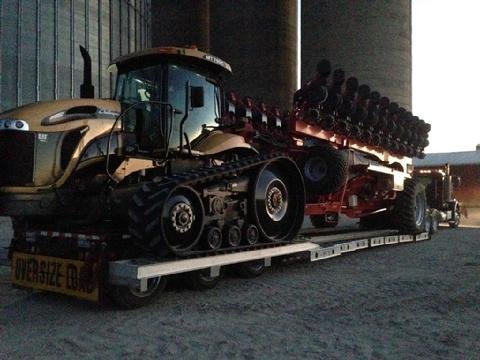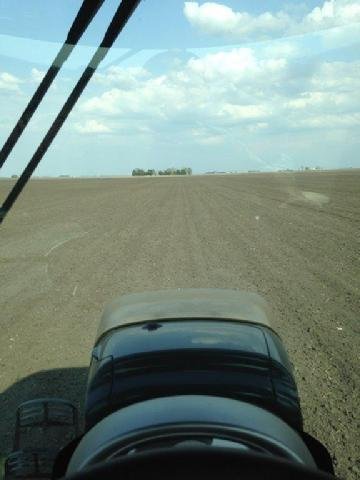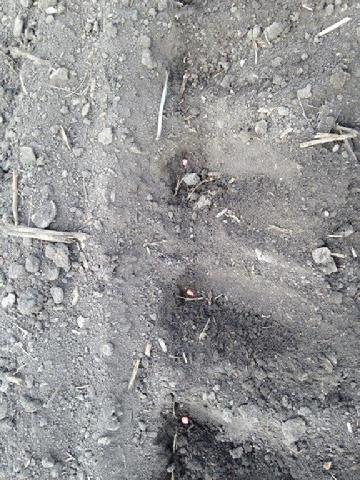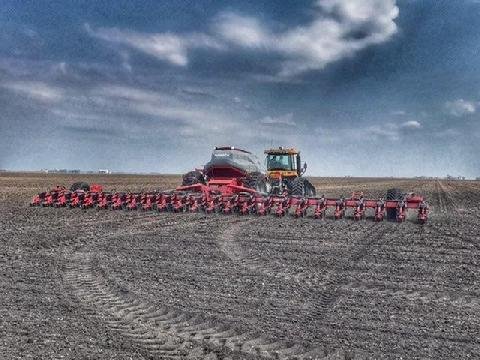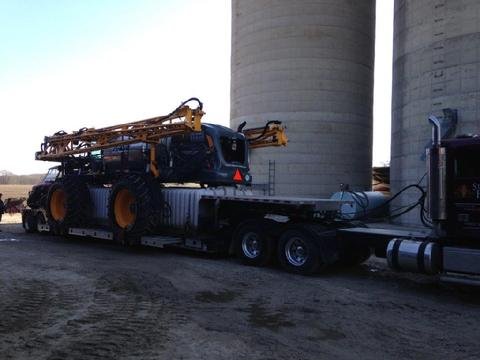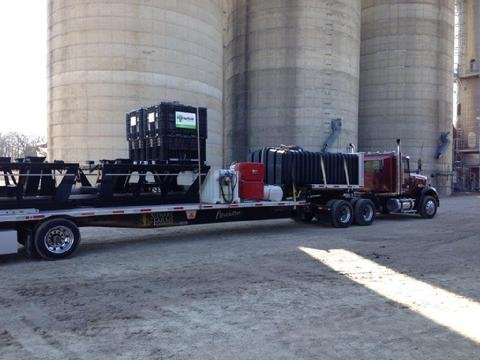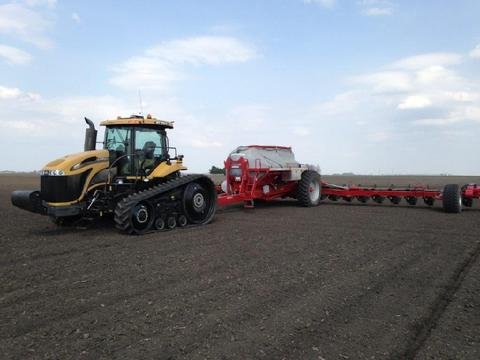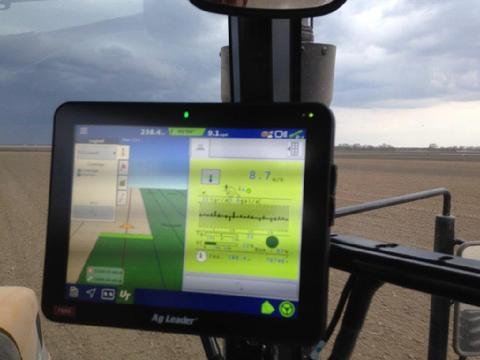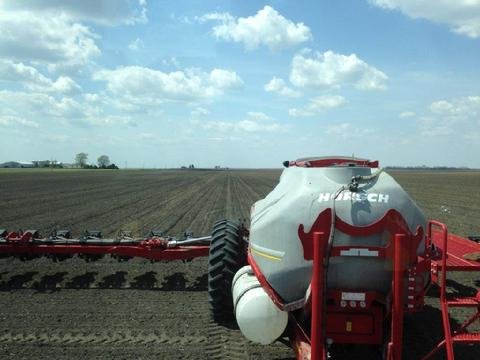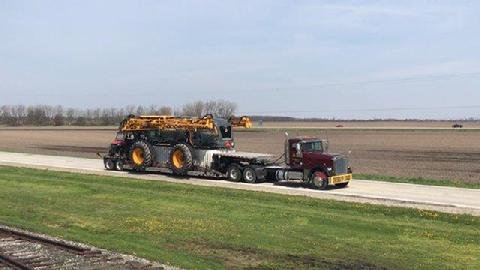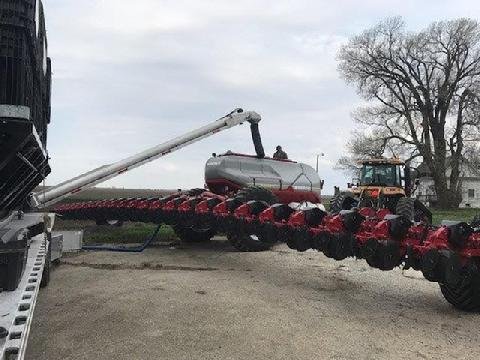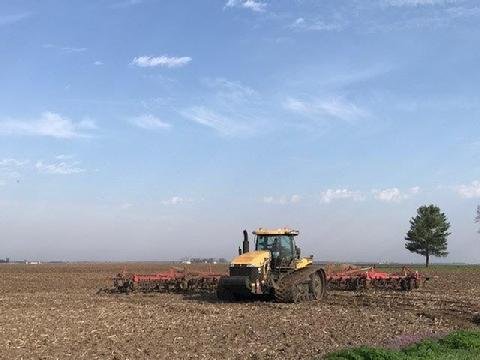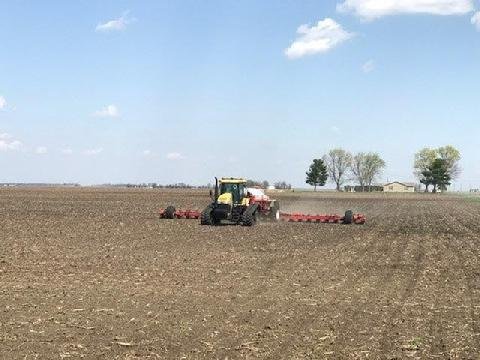2017 Crop Year
Harvest Season
Week Ending September 30th
We started harvesting soybeans this week in Farmer City. Soybean moisture levels were 12-13% when we started. Yields were better than expected with most fields running 70-80 bushels per acre. Most of the beans had green stems which slowed down the combines.
We are running 2 Claas 780 combines this year, both 45-foot MacDon heads in soybeans. The machines are equipped with AgLeader yield monitors that are linked through the internet with the AgLeader DisplayCast system. The system allows the coverage and yield maps to be shared instantly between machines and back to the home office.
We also started spreading limestone, potash, and phosphate on the fields this week. The spreading crew has been able to keep up right behind the combines.
The tillage crew has been running as well, working in the fertilizer and limestone.
By the end of the week, moisture levels in most of the beans had fallen to 9% which is lower than we like. Warm temperatures through the week dropped moisture levels quickly.
Below are some pictures from the week.
Week Ending September 23rd
We finished moving machinery down to Farmer City this week to start harvest there. We tried some corn in the middle of the week. Moisture levels were too high at 29%.
We kept busy working on equipment and working on the machine shed renovations while the corn dried down in the field. By Saturday the corn had dropped to 26% moisture which was still a little high to run with. We did make some good progress on the building renovations. We installed 10 4x6 foot windows in the building and started putting on the red siding.
Below are some pictures from the week.
Summer Season
Week Ending July 16
We are spraying fungicide and foliar fertilizer on the corn and soybeans in Farmer City this week. This area continues to miss the rains. We have had less than 1 inch of rain now in the last month. The crops look surprisingly good despite the lack of rain but it is taking its toll on yield potential.
We are also working on the Farmer City shed project, getting ready to install new siding and doors.
Week Ending July 1
This week was much less stressful than last week. We were able to get back to soybean spraying, hauling corn to market, and cleaning up planters. The crops continue to look good both at home and in Farmer City. Both areas could use some rain.
We got back to our machine shed renovation project in Farmer City. We started repairing the base of the building so that we can install some new steel siding on it later this summer.
Below are some pictures from the week including Keith walking some beans and our shed foundation work in Farmer City.
Week Ending June 24th
This was a rough week for us on the farm. The week started out well. We moved an excavator down to Farmer City to start demolition work on several buildings on an old grain elevator site we recently purchased. By Friday, we had taken down three buildings, hauled away the scrap metal, and we were in the process of cleaning up the burn pile where we had been burning the wood from the buildings. Saturday morning, my Dad dug a hole next to the burn pile to bury some concrete and the ashes from the fire. The fire was still burning, but it was mainly down to hot coals. The dug hole was about 10 feet deep. He backed the excavator up to the hole to get in position to lower some concrete into the hole. As he came close to the hole, the side wall of the hole gave way and the 60,000-pound excavator tipped over backward into the hole next to the fire.
I saw the machine tip over and went running to the hole. When the machine went into the hole, the door to the excavator was pinned against the side wall of the hole so Dad could not get out of the machine. The other side of the machine was starting to burn as it was next to the hot coals. Dad was trapped in a burning machine. I grabbed a spare bucket tooth out of the toolbox on the machine and broke out the window opposite the blocked door. I helped him climb out and get to a safe distance. About 30 seconds later the machine was fully engulfed in fire.
The fire department came to put out the fire but the machine was nearly totally destroyed. It was truly a miracle that no one was hurt. Dad had some small cuts and we took him to the local hospital to get checked out. God was watching over us that day. We are lucky to have Dad with us still.
We spent the rest of the day trying to drag the burnt machine out of the hole. It took two 550 hp Challengers and several attempts to pull the machine up and out of the hole. Thank you to Joe Plunk for all of his help that afternoon.
Below are some of the good and the bad pictures from the week.
Spring Season
Week Ending June 17th
We finished side-dressing nitrogen on the corn. We spent some time filling in small holes in the soybean fields with a 2-row planter this week. This planter is a little less advanced than our high-speed 24-row planters but it worked well for what we needed it to do. It is about time to put the planters in the shed for the year.
Week Ending June 10th
We started side-dressing corn in Farmer City this week. The early corn is past knee-high. We are using a prescription to variable rate our nitrogen application again this year.
Also sprayed corn and soybeans this week. The early corn that is about waist high is starting to show some stress from lack of moisture.
Week Ending June 3rd
We finished planting soybeans on May 31. The last soybeans went in well. I am glad we gave the ground a few more days to dry out. Below are some pictures of the last couple of fields going in.
Week Ending May 27th
Crops in Farmer City that we got in early are looking good. See pictures below. Corn looks very good despite all the rain they have had to date. Row-by-row planter control makes for pretty rows when the distance calibrations are correct.
We were able to get back into the fields for about one afternoon this week to get some beans planted.
We also spent some time in the shop this week making a brush guard for the front window on the excavator. Could be a lifesaver.
Week Ending May 20th
We were able to get back into the field on Monday of this week. We ran for 4 days before getting rained out early Friday morning.
We finished planting the first round of corn and made good progress on soybeans. The beans are now about 80% planted. All of the corn and beans planted before the cool/wet spell are now up. We will have some replant areas due to ponding but they are not as bad as we had thought they might be.
All of the pre-plant spraying is now done. We switched out the wide tires to narrow this week to start on post-spraying.
The excessive rains over the past couple of weeks blew out several field tiles. We are working on getting those repaired.
Below are some pictures from the week.
Week Ending May 13th
We continue to wait out the cold wet weather so we can get back into the fields. We have now been out for 3 weeks. The corn and beans planted before all the rain have yet to emerge but the seeds are still alive when we dig them up. Small sprouts are about to emerge on the corn. Below are some pictures of the dug seeds.
The weather forecast looks better for next week.
We continue to work on machinery and make sure it is ready to run again once the sun returns.
Week Ending May 6
Field conditions stayed wet and cold this week. We had another 0.5 to 1.1 inches of rain on the fields. We are somewhat concerned about the corn and beans we planted just ahead of this weather. The corn we planted last week has germinated but it has barely started putting a root down in these cold conditions.
We were able to get some repairs and maintenance done on the machines, haul corn to the river terminals, and do some excavator work. I am hopeful the field will dry out enough to get back in the fields next week.
Week Ending April 30th
We had a good start to the week in the fields around home. Field conditions were dry and we started spraying, field cultivating, and planting both corn and soybeans on Monday. By Thursday we had over 1/2 of our corn in and about 1/3 of the beans planted around the Yorkville area. While the weather conditions were good while we were planting, we were concerned about the wet and cold weather in the forecast.
We were rained out on Thursday evening. The first round of showers only brought about 1/2 inch of rain. However, by the end of the weekend, we had gotten 3.5 to 5.5 inches of rain in most fields. Many areas in the fields ponded with standing water. We will have many places to replant once the water goes down.
Week Ending April 22
We had a good week of work in Farmer City. We finished all of our commercial corn and soybean planting in the Farmer City area on Friday. We started moving machinery north to Yorkville late in the week and started spraying around home on Friday as well.
One of the new tools we are using this year is DisplayCast from Ag Leader. This service allows us to share coverage maps between machines in the field in real-time. This is a big deal for us since we often run two planters in one field at the same time. The shared coverage maps allows us to know precisely where the other machine has planted. The automatic row shut-off system can read the coverage map from the other planter and control the planter based on the combined coverage map of both planters. In order for the system to work, the planters need a live Wi-Fi connection.
Besides sharing coverage maps between planters, we can also share guidance lines. A new or changed line is instantly available to all machines and we can tell which lines to other machines are currently running.
The data is also being shared this way from the sprayer to the planters. We can tell which areas of the field were sprayed with which chemical. This is useful when we have corn and soybean splits in a field.
The AgFinity system through AgLeader allows us to track all of the machines in real-time and view the data they have collected through an iPad app or through a website.
Below are some pictures from the week including shots of two planters working in the same field with the shared coverage maps.
Week Ending April 16th
We were able to get started planting corn and soybeans in Farmer City this week. Field conditions improved in that area this week as the rains started to hold off and temperatures rose into the 70s. We started spraying and field cultivating on Wednesday. Corn and soybean planting started on Thursday, April 13th.
Both the corn and soybeans are getting a pre-plant herbicide. The corn herbicide is Harness Extra and the soybean herbicide is Fierce. The corn herbicide is being applied with 32% liquid nitrogen, giving the crop its first of three shoots of nitrogen fertilizer for the year. We are again running a Hagie STS16 sprayer that has a 120ft boom and a 1600-gallon solution tank.
After the spraying pass, all of the ground gets worked with a field cultivator. The field cultivators are 60 feet wide and are pulled at about 10 mph with Challenger 875 and 865. The tillage tractors run on RTK GPS steering on our controlled traffic system. All of the machines run on preset guidance lines so that the wheel traffic is all in the same paths and the tracks are not where the crop rows will be.
We are planting with 2 Horsch 24-row/30-inch planters which are 60 feet wide. One planter typically stays in corn while the other stays in soybeans. The corn planter is putting down liquid starter fertilizer for the corn. Seeding rates for both crops are controlled by variable rate prescriptions that have been written based on soil types and historical yield levels. Corn seeding rates vary from 30,000 to 38,000 seeds per acre while soybean rates vary from 130,000 to 160,000.
We are using some new technology in the planters and sprayer this year. We are using AgLeader's Display Cast and AgFiniti service which allows data to be shared between the machines in real time. This allows us to share coverage maps, seeding prescriptions, and guidance lines. This has been useful so far when we have had multiple crops in one field with the need to keep track of where corn vs. soybean herbicide was applied and make sure the correct crop is planted in the correct area of the field.
We were able to get in over 1500 acres of corn and soybeans planted late this week before rains moved in Saturday night.
Below are some pictures from this week's work.
